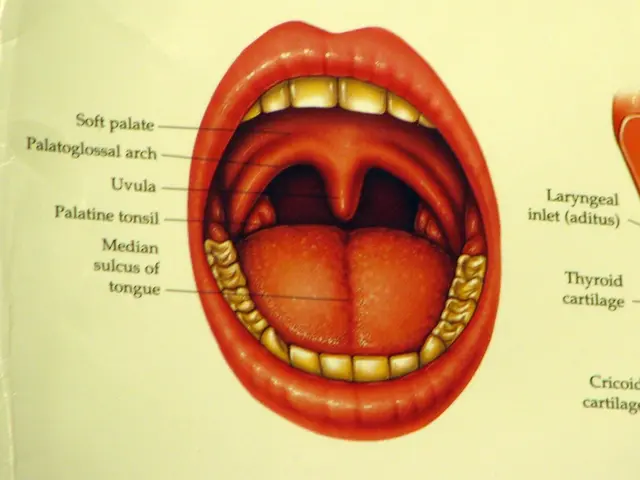Connection and Risk Elements Connecting Breast and Ovarian Cancer
Hear me out, folks: There's a strong connection between breast cancer and ovarian cancer, mainly due to genetic factors. The plot thickens when people carry mutations in the BRCA1 and BRCA2 genes – these are like the bad guys in this story, increasing the chances of both cancers skyrocketing.
Now, what's interesting is that these two types of cancer share some risk factors. Not just the nasty BRCA genes, but also age, weight, and whether or not you've ever had a child. Some of these factors, like your weight, you can actually do something about. Losing some weight and maintaining a moderate one can lower your risk, so put down those fries, pal!
So, if you've had breast cancer, brace yourself – you might have an increased risk of developing ovarian cancer. Same goes for those with ovarian cancer – they might have a higher risk of getting breast cancer. This increased risk is due to those sneaky BRCA genes, not the diseases themselves.
But what about other risk factors? Well, let's dive in, shall we? Studies show that around 50% of families with ovarian and breast cancer have mutations in the BRCA1 gene, while 20% have mutations in the BRCA2 gene. Other shared risk factors include a family history of either cancer, being older (with ovarian cancer happening more often after 40, and breast cancer after 55), overweight or obesity, having a first child over the age of 30, never having children, and not breastfeeding.
Now, the good news is that some risk factors, like having had breast or ovarian cancer before, are unchangeable. However, managing these risk factors is crucial. This might mean close monitoring by your healthcare team, lifestyle changes, and preventive medical procedures in some cases.
For those carrying genetic mutations, doctors may consider additional options such as prophylactic surgeries. These are procedures where they remove organs or tissues in an attempt to prevent the occurrence or spread of cancer.
But let's get real – not all risk factors are unchangeable. Some, like maintaining a moderate weight, regular exercise, reducing alcohol intake, and oral contraceptives, are actually within your control. By making healthier choices, you can lower your risk.
Now, prognosis-wise, people with both primary breast cancer and primary ovarian cancer have a relatively favorable outlook, with 5- and 10-year overall survival rates of around 90%. The outlook is generally better when the interval between the two diseases is longer. However, ovarian cancer following breast cancer tends to be diagnosed at a later stage, which can negatively affect survival.
In conclusion, the link between breast cancer and ovarian cancer is strong, mainly due to shared genetic mutations, particularly in the BRCA1 and BRCA2 genes. People with these mutations have a significantly higher risk of developing both cancers. Regular screenings, genetic testing, and preventive measures are essential for those at higher risk. If you have concerns, don't hesitate to speak with your healthcare team. They're there to help!
- The connection between breast cancer and ovarian cancer is often due to genetic factors, particularly mutations in the BRCA1 and BRCA2 genes.
- Some shared risk factors for both breast and ovarian cancer include age, weight, and reproductive history.
- Studies suggest that around 50% of families with both ovarian and breast cancer have mutations in the BRCA1 gene, while 20% have mutations in the BRCA2 gene.
- If you've had breast cancer, you might have an increased risk of developing ovarian cancer, and vice versa.
- Managing risk factors is crucial for those at higher risk of developing breast or ovarian cancer, which may involve close monitoring, lifestyle changes, and preventive medical procedures.
- By making healthier choices like maintaining a moderate weight, regular exercise, reducing alcohol intake, and oral contraceptives, you can potentially lower your risk of both breast and ovarian cancer.








